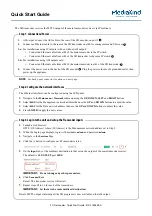
REPAIR AND REPLACEMENT PROCEDURES
COMPONENT REMOVAL AND INSTALLATION PROCEDURES
WBPEEUI110504A0
8 - 5
5. Remove the two screws securing the characterization
board to the electronics housing (Fig.
).
6. Use the 4-mm Allen wrench to remove the cell locking
screw (Fig.
7. Remove the cell lock (Fig.
8. Carefully remove the cell and process flange assembly,
feeding the cell cable and characterization board through the
opening left in the electronics housing by the cell.
9. Use the adjustable end wrench to remove all four of the
process flange nuts on either side of the process flange
(Fig.
).
10. Separate the flanges from the cell, taking care not to dam-
age the isolating diaphragms (Fig.
).
11. Remove the cell, process, and cover O-rings (Figs.
).
Cell and Characterization Board Assembly Installation
1. Refer to
and determine the proper replacement
cell, process flange, and cover O-rings for the application.
2. Coat the O-rings with a film of Dow Corning No. 4 com-
pound and install.
3. Mount the process flanges in the proper position and insert
the process flange studs until the process flange nuts already
installed come in contact with the process flange (Fig.
4. Starting with one of the other four process flange nuts, fin-
ger tighten it only until it comes in contact with the process
flange.
5. Proceed in the same manner with the remainder of the pro-
cess flange nuts, operating diagonally two by two.
6. Working diagonally two by two, tighten the process flange
nuts in 25% increments until reaching a value of 65 to 69 Nm
(48 to 52 ft-lbs) for stainless steel and NACE nuts, 78 to
82 Nm (57 to 61 ft-lbs) for carbon steel nuts, or 179 to 191 Nm
(131 to 141 ft-lbs) for high static pressure nuts.
NOTE: If the O-rings are PTFE, tighten to the same torque again
after
five days. This is necessary due to the cold flow properties of
PTFE. Tests have shown that a loss of torque of as much as
40 percent occurs over the five days. After a second tightening, no
loss of torque is apparent.
Summary of Contents for Platinum standard Series
Page 1: ......
















































